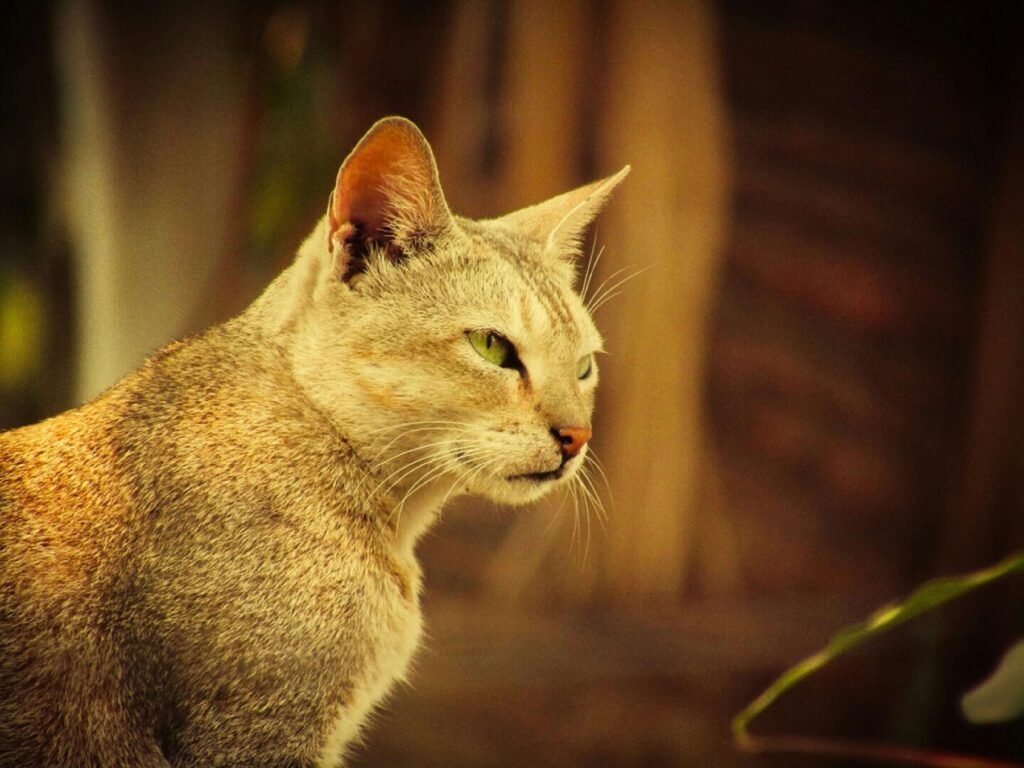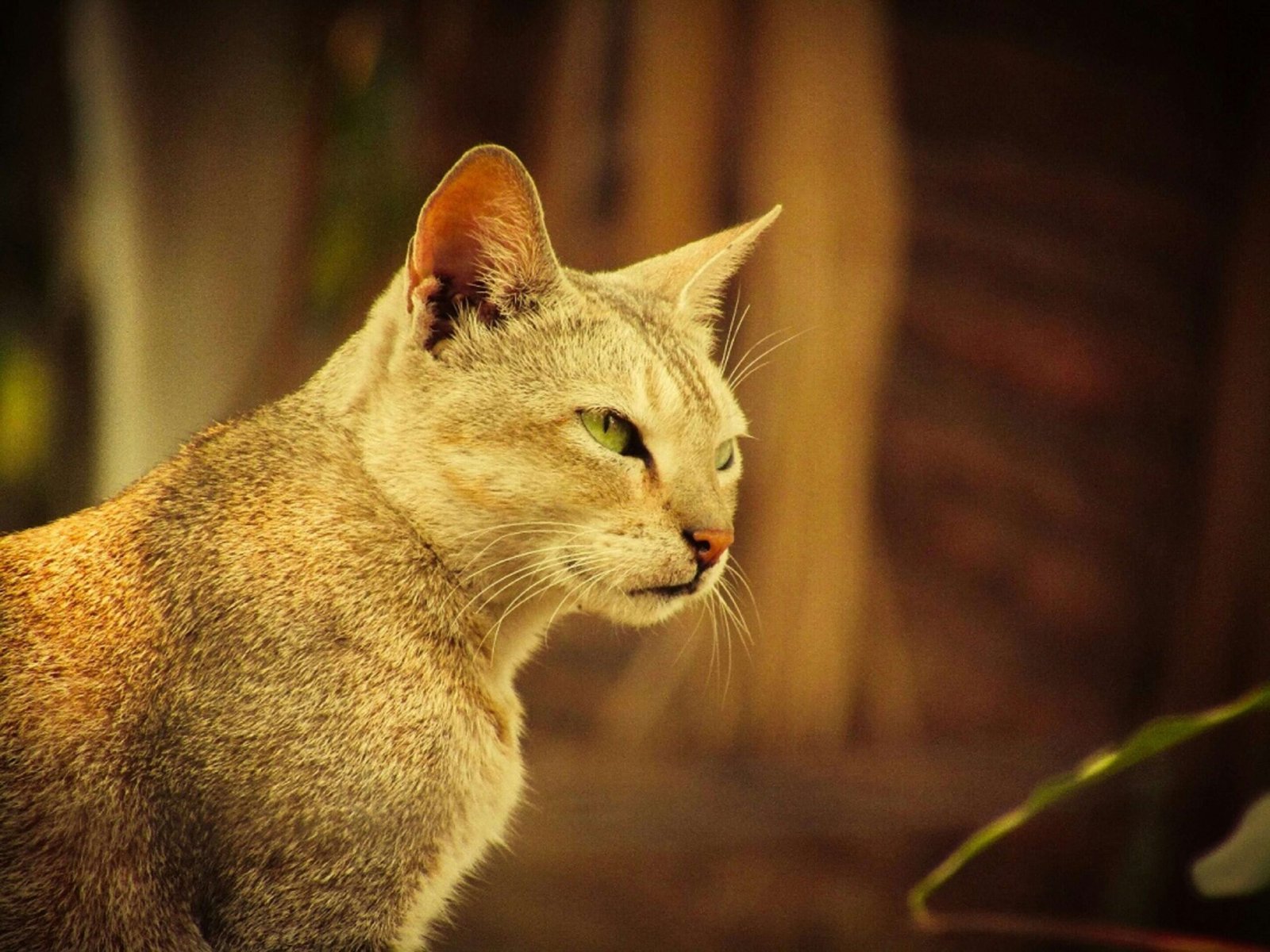Why Does My Cat Bite Me Gently Out of Nowhere?
Cats are enigmatic creatures, full of charm and mystery. One moment they’re purring contentedly in your lap, and the next, they might surprise you with a gentle nibble. If you’ve ever wondered why your feline friend suddenly decides to sink their tiny teeth into your skin, you’re not alone. This behavior can be puzzling, but it’s also a fascinating glimpse into the unique ways cats communicate. In this blog post, we’ll explore the reasons behind these seemingly random bites, what they mean, and how you can respond to them. Whether you’re a seasoned cat owner or new to the world of feline companionship, understanding this behavior will deepen your bond with your furry friend.
Understanding Your Cat’s Behavior: Is It Playful or Something Else?
Cats use biting as a way to express a range of emotions and intentions. To better understand why your cat might bite you gently, let’s break down the possible reasons behind this behavior:
Playfulness: Cats often engage in mock biting during play. This is a remnant of their kittenhood when they would wrestle and nip at their littermates.
Affection: Believe it or not, gentle bites can be a sign of love. Cats sometimes use their mouths to groom or show affection, similar to how they lick each other.
Overstimulation: Cats have sensitive skin, and too much petting can overwhelm them. A gentle bite might be their way of saying, “I’ve had enough.”
Curiosity: Cats are naturally curious animals. A sudden bite could be their way of exploring something new or unfamiliar about their environment—or even you!
Attention-Seeking: If your cat feels neglected, they might resort to biting as a way to grab your attention.
Understanding these motivations can help you interpret your cat’s actions more accurately. Remember, every cat is unique, so observing their body language and habits is key to decoding their behavior.
Decoding the Signs: What Your Cat Might Be Trying to Tell You
To further unravel the mystery of your cat’s gentle bites, let’s dive deeper into the subtle signals they might be sending. These signs can provide valuable insights into their emotional state:
Purring Before Biting: If your cat purrs before giving you a gentle nibble, it could indicate that they’re feeling relaxed but may need a break soon.
Tail Flicking: A flicking tail often signals irritation or overstimulation. If you notice this before a bite, your cat might be telling you to stop petting them.
Ears Flattened Back: When a cat flattens their ears against their head, it’s usually a sign of discomfort or annoyance. Proceed with caution if you see this behavior.
Slow Blinking Eyes: Slow blinking is a sign of trust and affection. If your cat does this while biting you gently, it’s likely a loving gesture rather than an aggressive one.
Body Tension: If your cat’s body feels stiff or tense before they bite, it could mean they’re feeling uneasy or stressed.
By paying close attention to these cues, you can better anticipate your cat’s needs and prevent unwanted bites. Cats are masters of non-verbal communication, and learning their language will strengthen your bond.
Check this guide 👉Why Does My Cat Bite Me While Purring? Best 7 Behavior Tips!
Check this guide 👉Why Is Your Cat Biting Nails? Best 7 Health Tips!

Possible Reasons for Gentle Bites | How to Respond |
|---|---|
Playfulness | Engage in interactive play sessions with toys. |
Affection | Gently stroke them or offer verbal praise. |
Overstimulation | Stop petting and give them space to calm down. |
Curiosity | Redirect their attention with a toy or treat. |
Attention-Seeking | Spend quality time with your cat daily. |
Preventing Unwanted Bites: Tips for Harmonious Coexistence
While gentle bites are usually harmless, some owners may prefer to discourage this behavior entirely. Here are practical tips to minimize unexpected nibbles:
Set Boundaries Early: Train your cat from a young age by withdrawing attention whenever they bite, even gently.
Provide Alternatives: Offer chewable toys or treats to redirect their biting instincts away from your hands.
Observe Petting Limits: Pay attention to how long your cat enjoys being petted and stop before they become overstimulated.
Use Positive Reinforcement: Reward your cat with treats or praise when they interact without biting.
Stay Calm and Patient: Avoid reacting strongly to bites, as this can confuse or upset your cat further.
With consistency and patience, you can teach your cat to express affection in ways that don’t involve biting. Remember, training takes time, so celebrate small victories along the way.
When to Worry: Identifying Problematic Biting Behavior
While gentle bites are generally harmless, there are instances where biting could indicate a deeper issue. Keep an eye out for these warning signs:
Frequent Aggression: If your cat’s bites become frequent or escalate to scratching, it may signal stress or territorial behavior.
Changes in Personality: Sudden shifts in behavior, such as increased aggression or withdrawal, could point to underlying health problems.
Excessive Vocalization: Loud meowing or growling accompanying bites might suggest pain or discomfort.
Avoidance of Interaction: If your cat starts avoiding contact altogether, it could be a sign of fear or anxiety.
Unusual Body Language: Hunched posture, dilated pupils, or flattened ears during bites may indicate distress.
If you notice any of these red flags, consult a veterinarian to rule out medical issues. Addressing potential problems early ensures both you and your cat remain happy and healthy.
Why Do Cats Use Biting as Communication?
Cats are subtle communicators, and biting is one of the many tools in their behavioral toolkit. Understanding why they resort to this form of interaction can help you respond more effectively:
Instinctual Behavior: Biting is a natural instinct for cats, rooted in their predatory nature. It’s how they explore the world and interact with their environment.
Social Bonding: In multi-cat households, gentle bites are often used to establish social bonds between feline companions. Your cat may extend this behavior to you as part of their “family.”
Territorial Marking: Cats sometimes use their teeth to mark their territory or claim ownership of something—or someone—they care about.
Testing Boundaries: Kittens especially use biting to test boundaries and learn what behaviors are acceptable. If unchecked, this habit can carry into adulthood.
Expressing Trust: A gentle bite can indicate that your cat feels safe and secure around you, as they wouldn’t risk such behavior with someone they perceive as a threat.
By recognizing these motivations, you can better interpret your cat’s intentions and respond in a way that fosters mutual understanding and trust.
How to Differentiate Between Playful and Aggressive Bites
Not all bites are created equal. Knowing the difference between playful nibbles and signs of aggression is crucial for maintaining a peaceful relationship with your cat:
Playful Bites Are Soft: Playful bites rarely break the skin and are accompanied by relaxed body language, such as purring or kneading.
Aggressive Bites Are Sudden: Aggressive bites often come without warning and are accompanied by growling, hissing, or swatting.
Body Language Matters: A playful cat will have loose, fluid movements, while an aggressive cat may arch their back or puff up their fur.
Context Is Key: Playful bites usually occur during interactive sessions, while aggressive bites might happen when your cat feels threatened or cornered.
Frequency Indicates Intent: Occasional gentle bites are normal, but frequent or escalating bites could signal underlying stress or frustration.
Understanding these distinctions allows you to address your cat’s needs appropriately and ensure both of you feel safe and comfortable.
Fun Ways to Redirect Your Cat’s Biting Instincts
If your cat’s biting becomes too frequent or disruptive, redirecting their instincts toward appropriate outlets can be a fun and effective solution. Here are some creative ideas:
Interactive Toys: Wand toys, laser pointers, and feather teasers engage your cat’s hunting instincts and provide a safe outlet for biting.
Chewable Toys: Offer cat-safe chew toys designed specifically for nibbling, which can satisfy your cat’s need to gnaw.
Food Puzzles: Puzzle feeders challenge your cat mentally and physically, keeping them entertained while reducing unwanted behaviors.
Scratching Posts: Scratching posts not only help with claw maintenance but also give your cat a surface to bite and chew safely.
Training Sessions: Short, positive reinforcement-based training sessions can teach your cat alternative ways to express themselves.
By providing enriching activities, you can channel your cat’s energy into constructive play, reducing the likelihood of unexpected bites.
FAQ
Why does my cat bite me gently out of nowhere?
Cats often bite gently to express affection, playfulness, or curiosity. It can also be a sign of overstimulation or attention-seeking.
Is gentle biting harmful?
Generally, no. However, if the biting becomes frequent or aggressive, it may require intervention.
How can I stop my cat from biting me?
Set boundaries, provide alternatives like toys, and use positive reinforcement to encourage good behavior.
Should I punish my cat for biting?
No, punishment can increase stress and damage your bond. Instead, focus on redirection and training.
When should I see a vet about biting behavior?
Consult a vet if the biting is accompanied by aggression, changes in personality, or unusual body language.
Building a Stronger Bond Through Understanding
Gentle biting is just one of the many ways cats communicate their feelings and needs. By observing their behavior and responding appropriately, you can foster a deeper connection with your feline companion. Whether it’s a playful nibble or a sign of affection, these moments remind us of the unique joy cats bring to our lives. Embrace the quirks of your cat’s personality, and remember that understanding their language is the first step toward a harmonious relationship. With patience and love, you’ll create a home where both you and your cat feel truly understood.
Can a Cat Die from a Cold? Best 7 Expert Tips! Learn how to identify, treat, and prevent feline colds while understanding when to seek veterinary care for your cat’s health.
Cat Screaming for Food: Best 7 Expert Tips! Discover effective strategies to manage your cat's food-related vocalizations and create a peaceful feeding routine.
Aspiration Pneumonia in Cats: Best 7 Expert Tips! Discover causes, symptoms, and treatment advice to protect your cat’s respiratory health and ensure a speedy recovery.
Hip Dysplasia in Cats: Best 7 Expert Tips! Discover expert advice on managing hip dysplasia in cats, from symptoms and prevention to treatment options for a happier, healthier feline life.





